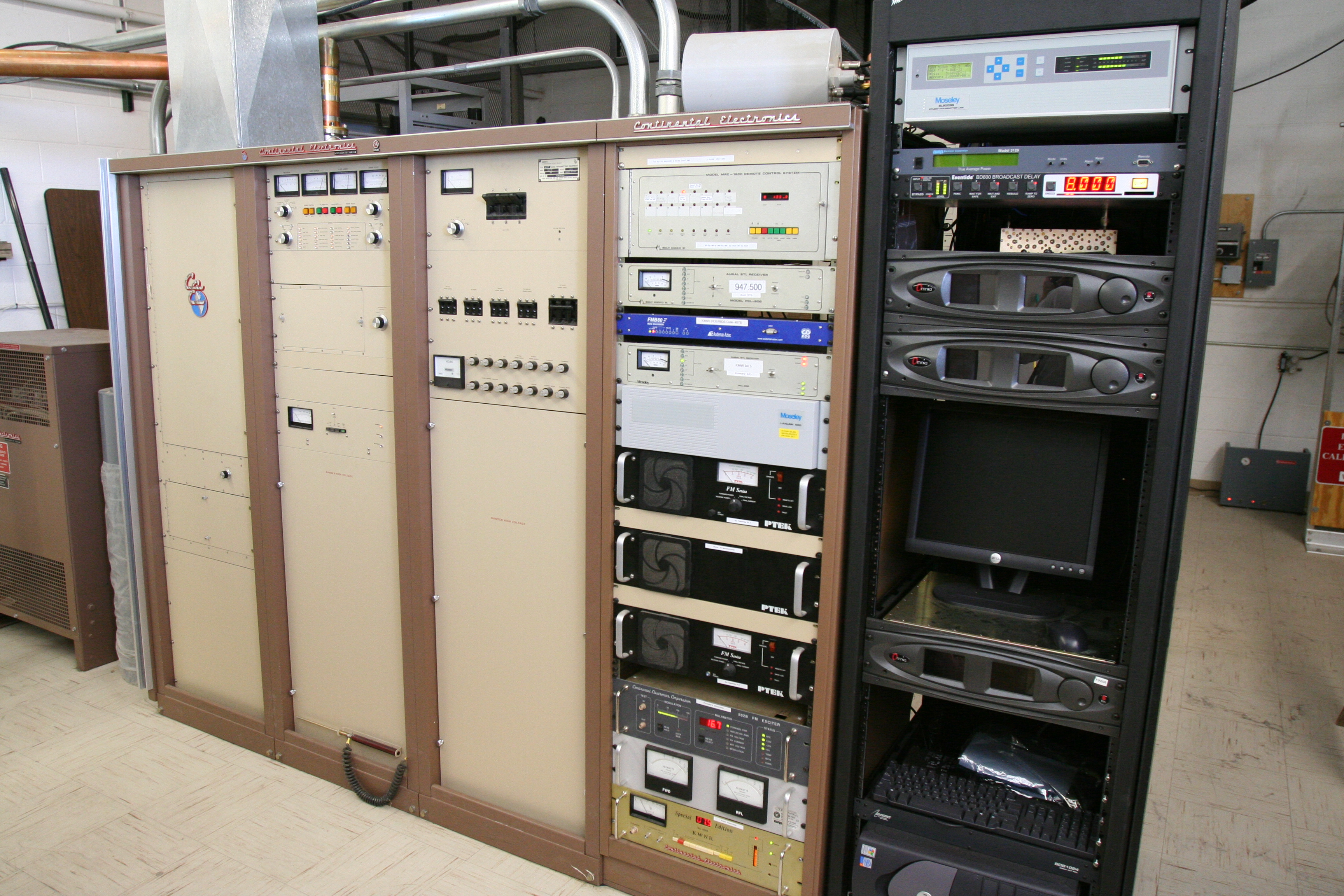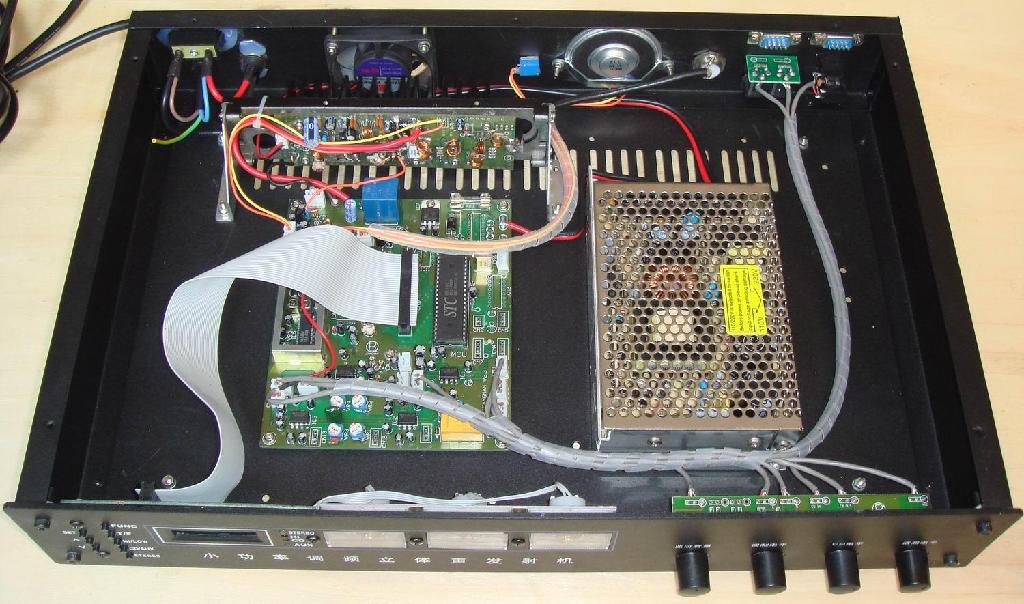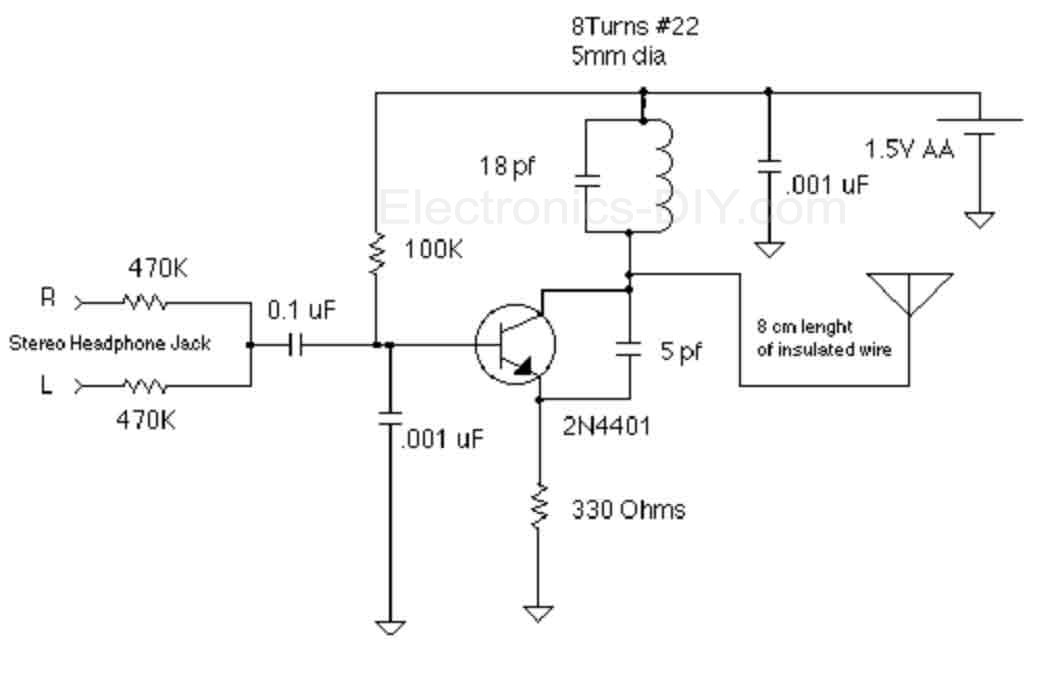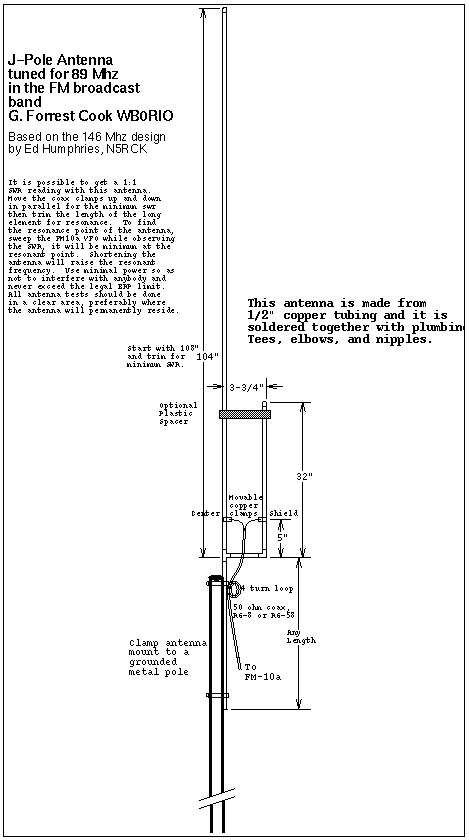FM broadcasting
FM radio ( English: FM radio) is broadcasting on ultra-short wave.
Technical details
Worldwide FM radio is operating in VHF band II between 87.5 MHz and 108.0 MHz. In some countries, only parts of it are used. Only Japan and some countries of the former Eastern Bloc sometimes use other frequency ranges. As a modulation frequency modulation (FM) is used. This allows for a less fault -prone transmission of broadcast signals, as it is compared to the amplitude modulation used in the long-, medium -, and short- wave range (AM ) is quite insensitive to atmospheric disturbances. The available frequency range in the band II is 20.5 MHz beyond twenty times as large as that in the medium-wave band. This area is divided into channels of 300 kHz width (channel height). In practice, however, these channels have no meaning today. The distance between the frequencies is only 100 kHz ( in Italy even 50 kHz).
However, tries to keep at least 200 to 300 kHz spacing at the relevant stations in a region. Nevertheless, there is the individual broadcasters a relation to the broadcasting in the AM bands much larger bandwidth, which allows a high-quality sound quality (High Fidelity ) as well as two-channel stereo to realize transmission. To improve the reception quality also the frequency response of the transmitted signal is the FM radio changed and made this change on the receiver side to reverse. This technique is called with Emphasis. Here arising from technical point of view differences between the FM radio in the U.S. and the rest of the world. The time constant used for pre-emphasis / de-emphasis in Europe is 50 microseconds.
The channel spacing allowed because of higher bandwidth, the transmission of other additional services such as traffic information announcements with ARI identifier and the Radio Data System (RDS).
Between 1974 and 1998 the so-called Euro signal was broadcast in Germany on the frequencies 87.340 MHz and 87.365 MHz. This usually amplitude modulated radio paging served for unilateral transmission of sound signals to mobile receivers. Should a participant be notified, so this could happen by telephone, ISDN or mobile phone (C / D network). The mobile receiver usually possessed four LEDs to indicate a call. Transmission of voice or numbers on the euro signal was not possible.
FM broadcasting in the UK and Ireland
In the UK and Ireland, the range of 88.0 MHz to 107.9 MHz is used.
FM broadcasting in the countries of Eastern Europe
In the former socialist countries of Eastern Europe ( with the exception of the GDR ), the Soviet Union and Mongolia was the frequency range from 65.9 to 73.1 MHz, the so-called OIRT band set for FM broadcasting. Only after the turn of 1989/90, some countries changed gradually to the Volume II, which was used in Western European countries. Nowadays, there are still active on both frequency bands - in Russia, a distinction, for example ( in everyday parlance) between FM ( 87.5 MHz to 108.0 MHz) and FM ( 65.9 to 73.1 MHz).
FM broadcasting in Japan
In Japan, the frequency range is 76 to 90 MHz is used for FM broadcasting.
FM broadcasting in South Korea
In South Korea, the frequency range 88 to 108 MHz is used for FM broadcasting.
FM broadcasting in the United States
In the United States, the usable frequency range is set to 87.9 to 107.9 MHz. The treble boost when sending ( pre-emphasis ) is fixed relative to the other countries to a different value. This results in a - mostly minor - incompatibility with the receivers. In addition, in the U.S. only on odd frequencies of 0.2 MHz (200 kHz ) is transmitted distance (ie, 87.9 MHz, 88.1 MHz, 88.3 MHz, etc ). The time constant used in the U.S. for pre-emphasis / de-emphasis is 75 microseconds ( microseconds).
History
1925 took place the first FM transmission in the world by Professor Abraham Esau between Jena and Kahla.
After the Second World War, the frequencies for European broadcasters were reassigned at the International Broadcasting Conference in Atlantic City. After the Copenhagen wave plan, the losers States received very few adverse allocated frequencies in the medium-wave band. Therefore, the use of ultra-short wave transmitters was planned in particular in those states. The first European FM station was put into operation on 28 February 1949 in Munich -Freimann by Bayerischer Rundfunk ( 90.1 MHz).
The broadcasting of stereo broadcasts on FM began in the 1960s.
Since 2006 in Germany and in Switzerland, the operation of FM stations with a short range of a few meters (up to 50 nW ERP permitted radiated power ), eg for transmitting signals of an MP3 player to the car radio, allowed. These devices etc. are offered in the trade as FM modulator, FM transmitter (mini transmitter).
The future of FM broadcasting
The Digital Broadcasting Initiative ( IDR) of the German Federal Government had noted in a report from 2000, " that is to be replaced by Digital Audio Broadcasting (DAB ) to a yet to be determined at the time of FM radio. " Prerequisite for this would be that DAB passes through a digital platform for radio in the market, where the timing of the replacement of FM radio broadcasting has not yet been determined. Through joint efforts of all parties should be achieved that in 2010, uses the vast majority of listeners Digital Radio and thus the analog radio transmission could run from 2010. For reasons of legal certainty essential conditions of Analogue switch-off should be established by law.
This proposal was included in the § 63 para 5 of the Telecommunications Act (TKG ) with determining " the Federal Network Agency will revoke frequency assignments for analog broadcast transmissions on the basis of the broadcasting law to lead the competent national authority in accordance with the frequency usage plan for the FM radio by 2015 ".
The AG Digital Radio IDR had noted in a 2005 report:
- In Germany DAB transmitter networks are built over a large area and radio sets available in principle. Nevertheless, the DAB system has since its start in 1999 in the national market for many reasons can not yet sufficiently established. The previously required replacement of the FM system is therefore also 2014 not yet in sight.
- The analog FM radio will remain in the long term the most important distribution channel for radio programs. In view of the current supply situation on the previous development of digital radio and especially in the interest of the listener (eg car radios and kitchen radios) is assumed by the current experience of it, that the entire FM spectrum well beyond 2010 with frequencies for analogue radio will be occupied. Therefore, the current policy objective the replacement of the analog FM dissemination 2015 not be implemented.
- Regardless, at the destination, the analog radio broadcasting in the VHF frequency range to replace ( 87.5 to 108 MHz) through a digital system that continues to be held. The Volume II is for the radio are also permanently available. In addition to using the DAB system for digital use of the VHF band II must be a new aspect, the use of DRM observed. This technique would allow individual FM frequencies while maintaining the FM grid from analog to digital use without first planning conference on easy international agreements (similar to Chester 97 for TV) switch.
- A timetable for the process of switching the FM area can not currently be created. In any case, it should be noted that the switch-off of the entire analog transmission in the VHF range and their substitution depend through a digital transmission system in the technical implementation of developments at home and abroad, and only through an international planning conference (similar to RRC -06) will be to coordinate.
A digitizing the VHF range with DAB in Band II is temporarily excluded as DAB does not fit into the FM pattern and a digital conversion is frequency technically hopeless. Currently, there are initial thoughts, the FM band with the narrow-band systems, DRM and HD Radio to digitize.










